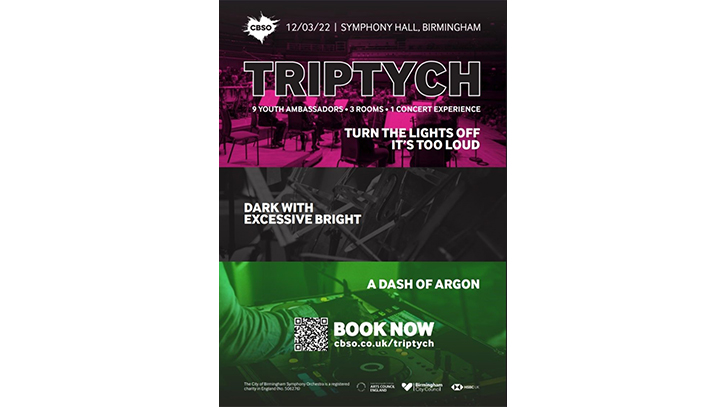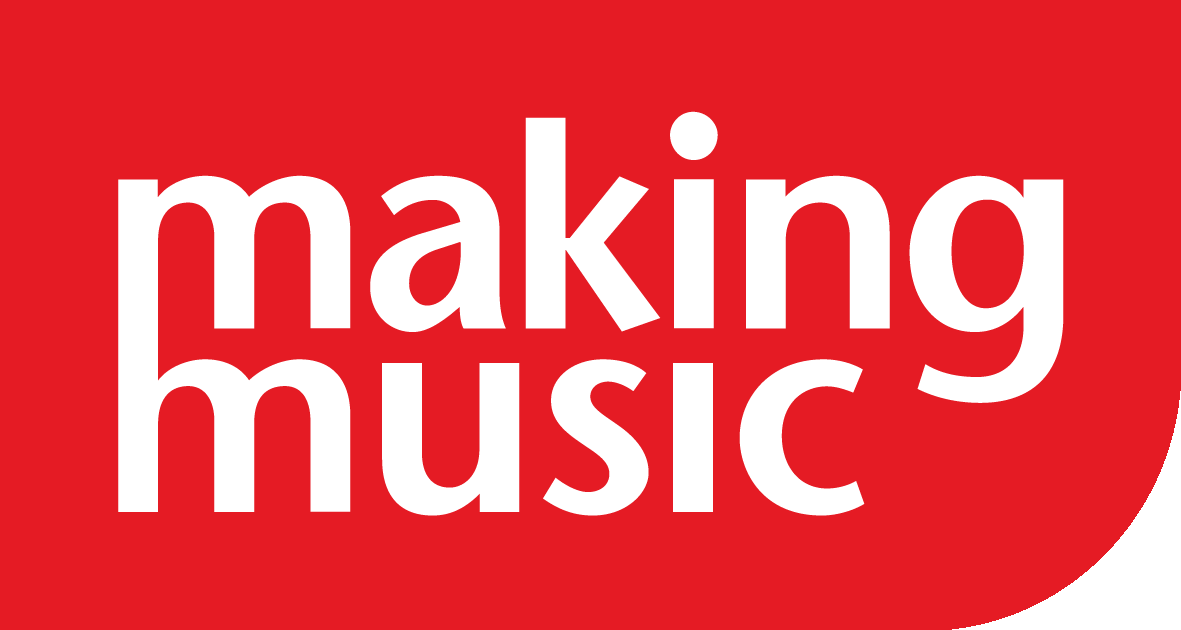Designing a concert for younger audiences
Bradley Wilson, conductor and trumpeter, talks to us about his work with the City of Birmingham Symphony Orchestra (CBSO) as part of their Youth Ambassador programme.
The CBSO's Youth Ambassador programme is an opportunity for young people (aged 16-21) to to take the lead on curating, programming and promoting a concert - with a predetermined budget, but no creative restrictions.
I was part of the second ever cohort of Youth Ambassadors, for the 2021-2022 academic year. There were ten of us, each eager and enthusiastic to create something new. The first few months we visited CBSO almost weekly to attend workshops with people from different departments (concert programming, marketing, finance, philanthropy). The aim was to take all the skills we learned from the workshops and to organise our own concert for March 2022.
Concept
Among the ten of us, we had to decide on what we wanted to get out of this specific concert, and after many discussions, we settled on getting a younger audience through the door. We also found that this was an easier goal than, for example, trying to get a more ethnically diverse audience, because that presupposes that all ethnically-diverse people like and want the same thing, which is not the case. But since we were all young people, we could empathise with what people our age wanted to see. What was interesting was that by targeting a younger audience we accidentally tackled the diversity problem as well - we found that the younger the audience, then naturally the more diverse the audience, which I think is because of changing societal perceptions between demographics.
'What was interesting was that by targeting a younger audience we accidentally tackled the diversity problem as well - we found that the younger the audience, then naturally the more diverse the audience...'
From my personal experience attending CBSO concerts, I knew the regular audience tended to be older - and not only that, but in the orchestra of 80 there would usually only be one or two people of colour. So there was a constant battle between pleasing pre-existing audiences and trying to do new things to attract a different audience. Also, people tend to become set in their ways and don’t want to listen to new music, especially if concert tickets are price-prohibiting – if you can only afford one yearly concert, you’re going to see something you know you’ll enjoy.
We initially started by picking out the music, but found that limiting, because then all other aspects of the concert had to fit around the music. So we started over, and decided we’ll start with the story, the concept of the concert. We asked ourselves, 'what do young people like doing?'. Many young people like going to nightclubs – 'what is it about nightclubs that’s not obviously different to concerts, but you wouldn’t necessarily consider'? Well, many nightclubs have multiple rooms playing different music in each, and people could easily move between them. So we decided that instead of having the traditional two-part concert with an intermission, we would have a three-part concert with two intervals (one short, one long) and each part of the concert would be themed around a different style of music, with its own atmosphere and look. We also went for music pieces that weren't overly long, so we could keep people's attention on us.
We called our concert 'Triptych', with the tagline 'From the loud to the light, dark to the bright, there’s room for everyone'. Our rooms were named 'Turn the lights off: it’s too loud', 'Dark with excessive bright' and 'A dash of argon'.
'We initially started by picking out the music, but found that limiting, because then all other aspects of the concert had to fit around the music.'
For 'Turn the lights off: it’s too loud' we took inspiration from going to the cinema, which is an experience designed to get you to focus on just one thing. For the concert we turned the lights down and the room was silent except for the choir singing ethereal pieces by Respighi and Dukas from backstage.
For 'Dark with excessive bright', we wanted to have a completely different experience. So we had pieces by Missy Mazzoli Philip Glass played by a percussion ensemble, then a string orchestra with a double bass concerto, and a brass fanfare - almost like waking people up.
The third and final room, 'A dash of argon', was intended as the 'fun room' and we played Gabriel Prokofiev’s Concerto for Turntables No. 1, featuring the DJ expertise of Mr Switch and conducted by Ben Gernon.
Marketing
Marketing was a huge thing for us. CBSO’s marketing strategy was to use printed brochures and Facebook ads, but those weren’t going to reach the audience we wanted. We instead focused on Instagram and TikTok, which are more popular with young people. We intentionally designed the printed posters with dark colours to be mysterious with little information to get people to scan the QR code to find out more. We also printed business cards that had just the colours and room names with a QR code, and since it was quite quirky, it peaked people's interest. We also reduced the ticket price to £5 to remove any affordability barriers.

The Triptych poster, showcasing the three different rooms. Photo credit: CBSO
Atmosphere
We wanted to create a welcoming atmosphere, more like a music festival than a traditional concert. We also wanted to debunk people's expectations, where they show up to the venue, sit down, listen to the music, then leave when it's over. To counteract that, we had a live band already playing music in the foyer, so as they were arriving people were being greeted with music.
We did away with the awkward traditions of clapping or of conductors talking before the performance, because these turn a lot of people off. Instead, the Youth Ambassadors explained the purpose of each room, to promote understanding and accessibility. We told people that if they wanted to get up and get a drink during the performance, they could; if they wanted to take photos (as long as they didn't distract the performers), they could - we wanted to make it similar to a gig that didn't have the behavioural rules of a traditional concert.
We also invited people to join us at the bar after the performance, as a sort of 'after-party' with a live brass ensemble. The front of house staff reported that it was the highest number of attendees they’ve had after any CBSO performance - and all because we asked people to stay after.
This experience taught me that music was not the most important thing for getting a younger audience – it’s how you frame and market it, and all the things you do around it to make an immersive and accessible experience.
Tips for attracting a new audience
I believe any leisure-time music group can take steps to invite new audiences in.
- Tell your audience what you’d like them to do, whether it's asking them to attend a pre-performance talk or stay afterwards for a drink at the bar.
- You can keep playing the same pieces you always have, but it's how you create an immersive and attractive atmosphere that will attract new people.
- The venues can be crucial. A younger audience, or those belonging to another religion, might not be comfortable attending a concert in a church. Consider performing in a neutral venue.
- Do all your posters look the same (e.g. candles for Christmas concerts)? Try something more vibrant and colourful.
- What are your group members wearing - is it all bowties and dresses? Why not try picking a palette of two colours but letting the members pick the actual style of clothes.
- Are you playing the same style or format of concerts every time (two-part with an intermission, the first part is contemporary, the second half is the piece everyone actually came for)? Try switching it up!
- Can you have an ensemble playing in the foyer before or after the performance? You're basically trying to make your concert live beyond the programme.
Follow Bradley Wilson on X (Twitter).
Find out more about the City of Birmingham Symphony Orchestra.

